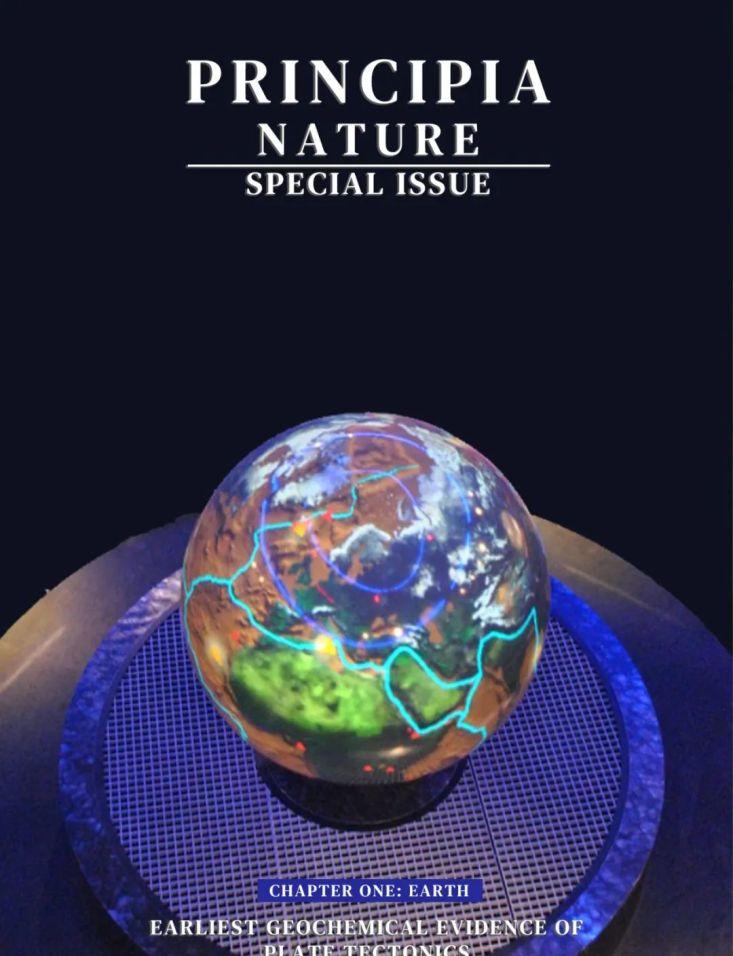
The Earth of the Underworld, hundreds of millions of years after its birth, is like a mysterious black box to us.
Because the Earth's surface itself is like a giant recycling system, constantly reusing its own material, it is difficult to find the geological record of the young Earth today.
Early Earth artist imaginations. (NASA Goddard Space Flight Center Conceptual Image, CC BY)
But fortunately for geologists, some rare rocks carry "time capsules" from the young Earth, called zircons, and these tiny crystals still have the opportunity to record the story of the young Earth.
According to a new study recently published in Advances in the American Geophysical Society, the small number of ancient zircon crystals found in South Africa contain the oldest evidence of a geological process known as subduction, which is a key factor in plate tectonics. The discovery provides a new clue to the debate over when plate tectonics begin to move.
The mystery of the time of plate tectonic movement
We all know that if the Earth is cut open, it is like a multi-layered cake, from the most superficial crust, to the molten mantle, and finally to the extremely hot core. The crust and the top layer of the mantle below it are divided into rigid plates that move slowly over the viscous but flowing mantle. Heat from the Earth's core drives this slow but unstoppable movement.
Schematic diagram of plate tectonics. (Photo: Pavel Bokr, Wikimedia Commons, CC BY)
At plate junctions, such as where a thinner oceanic plate meets a thicker continental plate, there is a possibility of a process of "creative destruction," which is subduction. Oceanic plates are inserted underneath the land plates, constantly melting and recovering the ocean crust into the Earth's interior. The dynamic processes of such crustal systems are behind volcanoes, earthquakes and mountain uplifts. Whether it's the famous Andes Mountains or the Pacific Rim, they are typical of modern subduction.
Schematic of subduction. (Photo: Nikolas Midttun, CC BY)
However, when did this plate tectonic movement begin in Earth's history, and when the modern crust was formed, the estimated time given by various studies is very different, from more than 4 billion years ago to just 800 million years ago. This uncertainty stems from the lack of geological records of the early Earth.
The secret of the time capsule
In the process of solving this mystery, in 2018, the research team excavated 33 miniature zircon crystals from a rare ancient crust in the Barberton Greenstone Belt in South Africa. These crystals are like a series of time capsules arranged in chronological order, formed at different times, spanning a critical period from 4.15 billion years ago to 3.3 billion years ago.
Tiny zircon crystals have been found in the ancient Barberton Greenstone Belt in South Africa. (Photo: Nadja Drabon, AGU)
Zircon is a relatively common by-mineral in the earth's crust, such microscopic crystals are generally formed in the magma inside the earth, through various geological processes are brought to the earth's surface, because of their own hard properties, often can withstand extreme tests, remain for a long time. As a result, they can be used as excellent materials for geological studies.
However, ancient representatives from 40 to 4.56 billion years ago are still very rare. The hafnium isotopes and trace elements preserved in the zircon of the greenstone belt tell the story of what happened on Earth when they crystallized. Zircon, 3.8 billion years ago and younger, appears to have formed in some unusual rocks that may have undergone pressure and melting processes similar to modern subduction zones. This suggests that the crust may have begun to move at this point.
In contrast, older zircons retain evidence of the global "in situ crust", which comes from remelted mantle rocks that have been stable for 600 million years.
Scientists have also noticed that in zircons elsewhere in the world, transitions to conditions similar to modern subduction have also occurred, most of which date back to about 200 million years before and after the formation of zircons in South Africa.
That is, about 3.6 to 3.8 billion years ago, there was a dramatic shift in the Earth, the global crust became unstable, and in many places there was a pressure and process from a stable in-situ crust to a similar modern subduction. New rock formations, geochemical features are becoming more and more similar to what we see in modern plate tectonics.
Signs of global change
While this is not yet conclusive evidence, the results already suggest that a major global change may have already begun between 3.6 billion and 3.8 billion years ago, and that evolution to plate tectonics is a clear possibility.
Plate tectonics have changed the Earth, shaping the Earth's atmosphere as well as its surface. The release of volcanic gases and the emergence of neosilicate rocks consume large amounts of carbon dioxide in the atmosphere, greatly alleviating the large temperature fluctuations caused by greenhouse gases. They are much like a climate thermostat, and without all the circulation and the formation of new crusts, our planet could fluctuate between boiling heat and icy cold low temperatures.
What's even more interesting is that to date, plate tectonics have only been observed on Earth, so it may even be a key factor in making the Planet habitable. Tracing the beginning of plate tectonic movements, understanding the beginning of this process, may have the opportunity to lead to more far-reaching discoveries.
#创作团队:
Written by: Gaviota
Typography: Wenwen
#参考来源:
https://news.agu.org/press-release/earliest-geochemical-evidence-of-plate-tectonics-found-in-3-8-billion-year-old-crystal
#图片来源:
Cover image: piqsels
首图:Wayne Hsieh, Flickr, CC BY-NC-SA